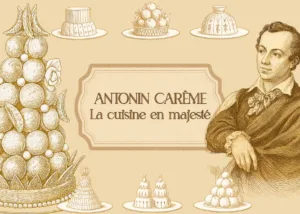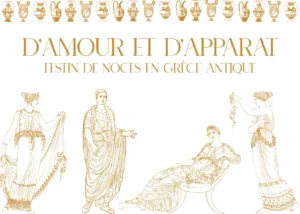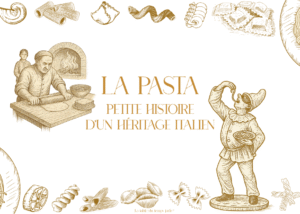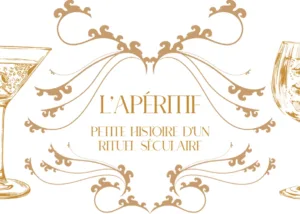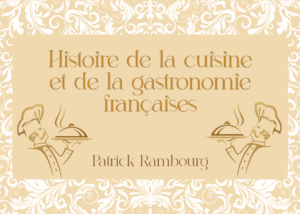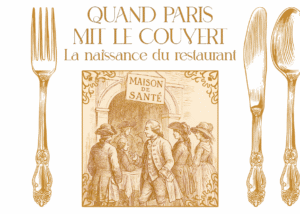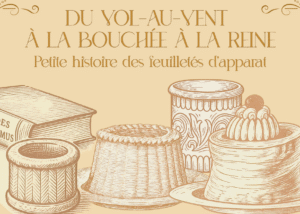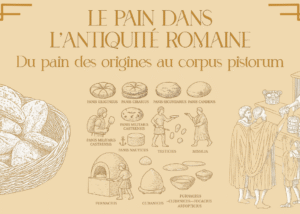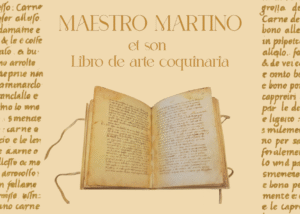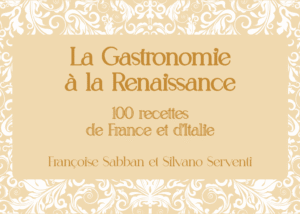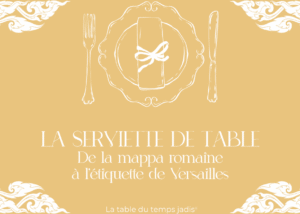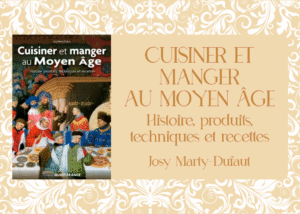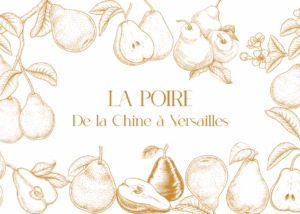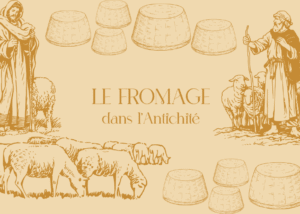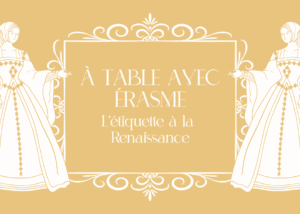When Paris put the cover
The new theater of taste

Before becoming a habit, the restaurant was a revolution. In the 18th century Paris , it arises as an unidentified corporate object: neither hostel, table d'hôte, nor caterer, but a new place, halfway between body care and staging of oneself. This French innovation , long ignored by culinary history, has changed our way of eating, showing us, and living.

Broth and health
It all started in 1765 , in Paris, when Mathurin Roze de Chantoiseau opened a singular establishment, first rue des Poulies , then transferred to the Hotel d'Aligre , rue Saint-Honoré . On the facade is a Latin motto Pastichable a verse from the Gospel according to Matthew : "Coming Ad Me Omnes which Stomacho Laboratis, and Ego your Restaurant" - " Come to me, you whose stomach is suffering, and I will restore you . »»
This place, which he calls "health house" , offers fortifying broths called "restaurants", served at any time, quiet, to customers installed alone. Far from the hubbub of host tables or hostels, space promotes comfort, discretion, self -care.
For a long time, some have attributed this innovation to a mysterious "baker" , but contemporary research - especially those of the historian Rebecca Spang - have found no reliable trace of this character. According to her, it would be a nickname or a confusion with Roze de Chantoiseau himself.
The real revolution is therefore not so much in the broth as in this new way of eating in town : alone , free , at its own pace . The modern restaurant was born.

The card of his desires
Very quickly, the medicinal vocation of the place gives way to a larger form of restoration . The idea of a fortifying broth becomes the starting point for a new, more refined, freer, more attractive offer. Roze is not only a healthcare merchant: he hurries that eating can also be an art of living .
At Roze , we don't eat at a fixed time at a table d'hôte, in the company of unknown. We choose his dish , his schedule , and we settle in a private firm , alone or accompanied. intimate, chosen , sometimes worldly moment - but always to its own measure. This possibility of eating "à la carte" , while everyone is still used to the fixed menu , is revolutionary . The ordinary becomes exceptional. The customer is free , served with discretion , and pays dear for that: one book per meal , sometimes more. It is not the kitchen that attracts but the ceremonial and the comfort.
The restaurant, thus designed, is not a place of simple subsistence: it is a space of social representation . We show , we isolate , we choose what we exhibit. The old regime perceives a threat there; Lights , a promise.

The theater of taste
The very first restaurants are frequented by a very chosen clientele . Not yet the crowded bourgeois, but rather downgraded aristocrats , cultivated rentiers , scholars in search of a discreet and refined inter-self The printed menu , presented as an object of reading, alone becomes a promise of escape .
We also go there to read , observe , meet , without the constraint of the hostel or domesticity. The furniture is refined, the lighting is worked, the dishes harmonizes.
The restaurant becomes a "theater of taste" , in the full sense: staging of oneself , chosen decor , invisible but present public .
And in this world where the appearance is written on an immaculate tablecloth , food is no longer a pretext: it becomes a subject . Besides, new criticisms take it, starting with a certain Grimod de la Reynière .

Grimod, the gastronomer in scene
With Grimod de La Reynière , the restaurant enters the literature . This son of a farmer general , born in 1758 , a whimsical scholar with the malformed hands that he hides under gloves, invents a new genre: gastronomic criticism . His "Almanac des Gourmands" ( 1803–1812 ) becomes the Bible of a society where the dishes are judged as we comment on the shows.
Every Wednesday , in his mansion in his mansion then at the Rocher de Cancale , he organizes dinners-juries . The restaurateurs send their dishes there, judged blind . The best earn a place in the Almanac, the others a sometimes murdered criticism. Grimod, with spirit , puns and pictorial comparisons , erects gastronomy in art . For him, the turbot is the pheasant of the sea , the sardine L’Ortolan of the poor .
It especially introduces a new relationship to food : subjective , aesthetic , social . Through his words, it is a whole art of French life that takes shape. And the restaurant becomes the real theater of this new human comedy .
When Paris put the cover the new theater of the taste

Find other blog articles
Find other blog articles





